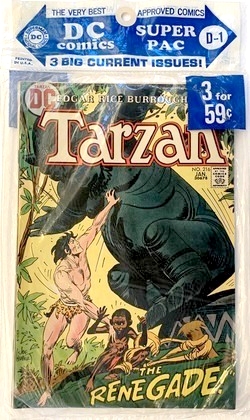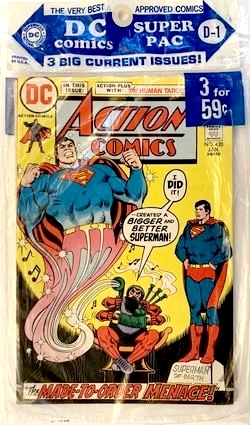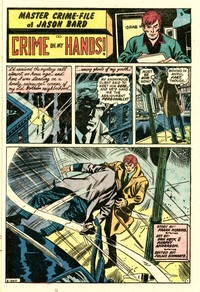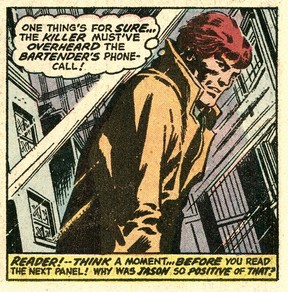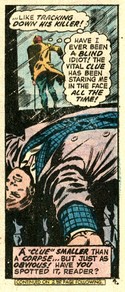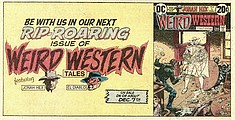 |
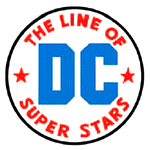 |
|
TARZAN,
BATMAN & SUPERMAN
BACK
TO BACK IN A
JANUARY
1973 DC SUPER PAC
|
|
|
|
| |
|
| |
|
| |
|
| |
DC COMICS
SUPER-PACs |
|
Even in the early
1960s, the comic book industry
realized that in spite of the
hugely successful comeback of the
superhero genre (which had been
clinically dead for most of the
1950s) and the subsequent streak
of new creativity and enthusiasm
it generated, its traditional
sales points were fading away.
Small stores that had carried
comic books were pushed out of
business by larger stores and
supermarkets, and newsagents
started to view the low
cover prices and therefore tiny
profit margins comics had to
offer as a
nuisance. Many ideas on how
to turn these developments around
were put forward by different
publishers, but the most
successful concepts strived to
open up new sales opportunities
and markets and thus tap into a
new customer base.
|
|
|
|
| |
| One place
these potential buyers could be found was the growing
number of supermarkets and chain stores. But in order to
be able to sell comic books at supermarkets, the product
would have to be adjusted. |
| |
| Handling
individual issues clearly was no option for these
outlets, but by looking at their logistics and
display characteristics, DC Comics (who came up
with the Comicpac concept in 1961) found
that the answer to breaking into this promising
new market was to simply package several comic
books together in a transparent plastic bag. This
resulted in a higher price per unit on sale,
which made the whole business of stocking them
much more worthwhile for the seller. The simple
packaging was also rather nifty because it
clearly showed the items were new and untouched,
while at the same time blending in with most
other goods sold at supermarkets which were also
conveniently packaged.
|
|
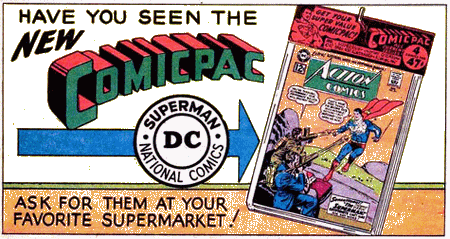 |
|
| |
| Outlets were even supplied with dedicated Comicpac
racks, which enhanced the product appeal even more since
the bags containing the comic books could be displayed
on rack hooks in an orderly and neat fashion. It didn't really matter therefore
that buying these three comic books in a comicpack for
say 59¢ (rather than from a newsagent for 60¢ in that case) clearly presented no real bargain - it
was the opportunity and convenience to pick up a few
comics at the same time parents and adults did their
general shopping. Neatly packaged, it almost became an
entirely different class of commodity. DC's
"comicpacks" were, in a word, a success - so
much so that other publishers quickly started to copy it.
|
| |
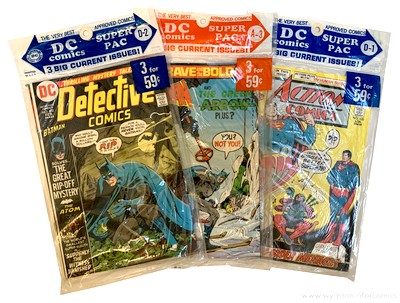
|
|
"The
DC [comic packs] program lasted well
over a decade, with pretty high
distribution numbers. The Western
program was enormous - even well into
the '70s they were taking very large
numbers of DC titles for distribution
(I recall 50,000+ copies
offhand)." (Paul Levitz, in
Evanier 2007)
By the early
1970s, DC relaunched their comicpacs,
calling them DC Super Pacs, and
they continued to sell well.
Unlike comic books
distributed to news stands and other
traditional outlets, comicpacks were
non-returnable. Bags that didn't sell
were thus the retailer's problem, not the
publisher's (leading some distributors
and retailers - who most likely had
previously rigged the returnable comic
scheme, e.g. by selling comic books
without their covers - to simply split
the packs open and return the loose
comics).
|
|
|
| |
| The only way to stop such illegal
behaviour was to make comic books contained in
comic packs distinguishable from regular news
stand editions - and Western, the largest
distributor of comic packs, did just that as of
1972 by introducing their logo on the cover. DC titles distributed by
Western in their own comicpacks featured the
Western "smiling face" logo instead of
the DC roundel; the covers would also not show
the issue number and the month.
DC's own comicpacks,
however, continued to contain regular newsstand
editions only throughout the 1970s.
|
|
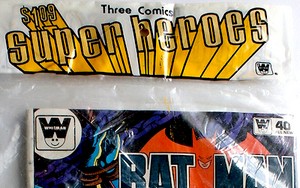 |
|
| |
|
| |
| This January (D-1) 1973 DC SUPER PAC
contains Tarzan #216, Detective Comics #431,
and Action Comics #420. and features two
flagship DC characters (Superman and Batman) alongside
one of DC's major licensed title (Tarzan). Right from the start in 1961/62, when DC
Comics launched the Comicpac, all of their
multi-comic packs were reference-numbered using a letter
plus digit, e.g. B-3. And since DC wasn't just filling
plastic bags at random with any comic books, a B-3 pack
from a specific year would carry the same titles and
issues no matter where or when it was sold (rare
packaging errors aside). By 1964 the digit would refer to
the month and contain comic books with a January cover
date (or January/February in the case of bi-monthly
titles), and the letters (A through D) marked the four
different packs per month (which was the rule from
mid-1972 to 1978, when DC ended their own comicpacks).
"D-1" therefore denotes the fourth January
SUPER PAC, in this case from 1973.
|
| |
| No titles had truly
permanent slots in the SUPER PACS, although there was a
high level of consistency with DC's flagship characters
(the data for 1973, for example, shows that the
SUPER PACs of that year offered buyers complete runs of Superman
and Batman as well as the Batman team-up title Brave
and the Bold). But since
sales points could vary a lot with regard to their
supplies and selection of SUPER PACs, the availability of
specific titles was never guaranteed. However, one needs to bear in mind that
this was a common fate of the average comic book reader
in the 1970s Bronze Age, whether his or her comic books
came packaged in a plastic bag or as single issues from a
display or spinner rack. Back in those days, an
uninterrupted supply of specific titles was, quite
simply, never truly guaranteed. In the case of DC titles this mostly
wasn't a problem anyway. Unlike their major competitor
Marvel, DC's editorial at large still very much embraced
the "single issue, done in one" storyline
principle during the early 1970s, so it often didn't even
matter in which sequence you read your copies of Batman
or Superman, since every issue would start with
a brand new story (there were, of course, exceptions).
Also very much unlike Marvel,
DC had no regular editorial feature across its titles at
the time, through which the publisher would communicate
with its readership (the way Marvel and Stan Lee did with
their famous Bullpen Bulletins); the interaction
with fans and readers was limited to the letters pages,
and plugs for other titles restricted to in-house ads.
|
| |
|
| |
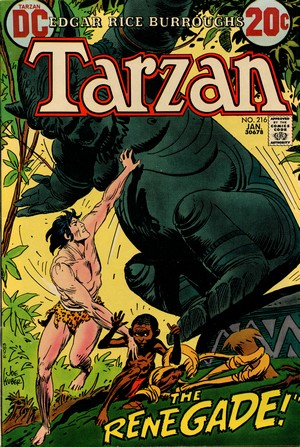
|
|
TARZAN
#216
January 1973
(monthly)
On Sale: 28 November 1972
Editor
- Joe Kubert
Cover - Joe Kubert (pencils & inks)
"The Renegades"
(18 pages)
Story - Joe
Kubert
Pencils -Frank Thorne
Inks - Joe Kubert
Lettering -
John Costanza
Colouring - Tatjana Wood
PLOT SUMMARY - Tarzan
prevents the looting of an ancient temple
by a group of renegade mercenaries.
|
|
|
| |
| Tarzan, created by American writer Edgar Rice
Burroughs in 1912 for a story entitled Tarzan of the
Apes, was an immediate hit with the pulp fiction
readership (Burroughs himself wrote two dozen sequels),
quickly became the star of radio shows, movies and other
media, and has been a household name in popular culture
ever since (Lupoff, 2005). Tarzan's career in comics
started out with an adaptation of Tarzan of the Apes into
newspaper strip form in January 1929, with artwork by Hal
Foster (of "Prince Valiant" fame). Numerous
publishers subsequently put out Tarzan comic books, and
the character has been licensed by Gold Key (Western
Publishing), Charlton, DC, Marvel, and Dark Horse Comics
over the decades.
|
| |
| DC took over the series in April
1972, publishing 52 issues of Tarzan up until
February 1977, and continued the numbering from
the previous Gold Key series, thus strating out
with Tarzan #207 and ending in Tarzan
#258 (publishers in the early 1970s still
believed that a comic book series would sell less
if people perceived it as new). It seems the main reason
Edgar Rice Burroughs Inc. chose to transfer the
comic-book license for Tarzan was Western's
disinterest in stepping up its production; Gold
Key was only putting out eight issues of Tarzan
a year (along with six issues of Korak,
Tarzan’s son), but none at all starring any of
Burroughs’ other creations, in spite of an ever
increasing market interest for more of his
material both in the US and abroad (Stewart,
2022). A chance meeting in Europe between Carmine
Infantino and ERB Inc.'s vice-president Robert
Hodes sealed the deal with DC (Schelly, 2008).
|
|
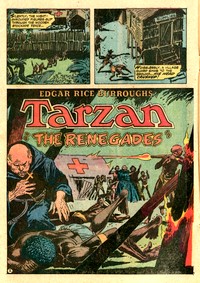 |
|
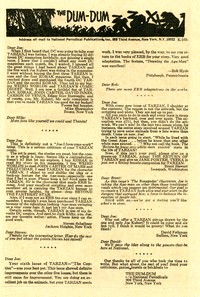 |
|
| |
 |
| |
| Infantino, it seems, had thought
of Kubert (who had enjoyed Burroughs’ fiction and Hal
Foster’s work on the newspaper comic strip in his
youth) right from the get-go of acquiring the license. |
| |

Carmine
Infantino
(1925 - 2013)
|
|
"One bright,
sunny day, Carmine called me into his office.
“Joe” he said with a broad smile, “how
would you like to do Tarzan?” Carmine and I
had known each other since we started in this
business. If anyone knew of my love for
Burroughs’ Tarzan, he did. I jumped at it.
Here was an opportunity for me to connect
again with the joys of my childhood. To
infuse myself into the world of Tarzan, the
Ape-Man, and to write and draw the character
that had been an inspiration to me." (Kubert,
2005)
Kubert immediately and
enthusiastically geared up for what he considered
to be a dream project, and his enthusiasm for the
material resulted in what is considered by many
to be some of the best work of his long career.
|
|
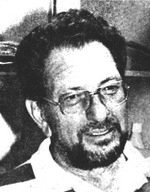
Joe
Kubert
(1926 - 2012)
|
|
| |
| Kubert decided to start out at
the beginning and thus initiated DC's run with an
adaptation of Burroughs’ first Tarzan novel. Whilst
this had been done before (by Hal Foster in a newspaper
strip rendering in 1928 and by God Key in a single issue
adaptation in 1965), editor-writer-artist Kubert wanted
this to go deeper into the original material, resulting
in a four-issues arc in Tarzan #207-210. |
| |
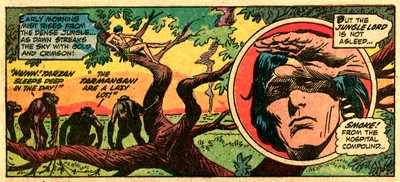
Tarzan
#216
|
|
DC's Tarzan
would feature additional adaptations of
the Burroughs books, with original
stories by Kubert slotted in between. Tarzan #216
stands out somewhat, as Frank Thorne took
over pencilling duties, albeit inked by
Kubert (who resumed complete art
responsibility with the following issue).
Critically
acclaimed, Kubert's take on Tarzan had
its critics at the time, as can be
glanced from the letters pages - although
more than anything else, it was the
backup feature that drew its regular flak
from readers who essentially just wanted
to see Tarzan in a comic book carrying
the title Tarzan.
|
|
|
| |
"Beyond
The Farthest Star"
(6 pages)
Story - Marv Wolfman
Pencils -Howard Chaykin
Inks - Howard Chaykin
Based on the
two novellas Adventure on Poloda
(published in 1942) and Tangor Returns
(published in 1964), which Burroughs had written
in a very short time in late 1940, they formed
the nucleus for a series that never came to be
and therefore remained a much lesser known part
of Burrough's work.
Marv Wolfman
breathed new life into it by adapting it for the
backup slot in DC's Tarzan, where it ran
through issues #212-218 (September 1972 - March
1973) as well as in Tarzan Family #61
(February 1976).
|
|
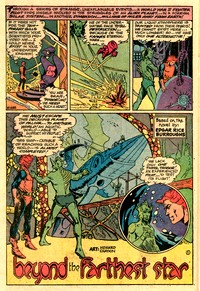 |
|
| |
 |
|
DC's very
first issue featuring the
character, Tarzan #207,
was included in the April 1972
B-4 DC Super Pac, and at least
three more issues are known to
have been included in Super Pacs
prior to Tarzan #216,
the tenth issue produced by DC. |
|
|
|
| |
|
| |
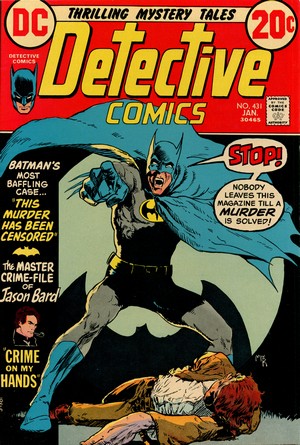
|
|
DETECTIVE
COMICS #431
January
1973
(monthly)
On Sale: 30 November 1972
Editor - Julius
Schwartz
Cover - Michael Kaluta (pencils
& inks)
BATMAN:
"This Murder Has Been
Censored"
(14.5
pages)
Story
- Denny O'Neil
Pencils - Irv Novick
Inks - Murphy Anderson
JASON
BARD: "Crime On My
Hands!"
(9
pages)
Story
- Frank Robbins
Pencils - Don Heck
Inks - Murphy Anderson
PLOT
SUMMARIES
- Batman investigates and solves
a murder at a luxury resort when
a man with the word
"censored" stamped on
his forehead is found dead. Jason
Bard finds one of his business
cards with a message scribbled on
it on a dead bartender.
|
|
|
|
| |
| It all started on November 26th
1969, when Detective Comics #395 hit the
newsstands with a cover date of January 1970. On the
surface of things, it was the first issue of DC's
namesake flagship title written by Dennis O'Neil and
drawn by Neal Adams. But at the core, Batman was about to
change in a fundamental way that would shape the
character indelibly. The story,
"The Secret of the Waiting Graves", is now a
classic in itself and often considered to be Batman’s
turning point as the Silver Age crossed into the Bronze
Age and the Darknight Detective returned to his gothic
roots.
|
| |

Dennis
"Denny" O'Neil
(1939 - 2020)
|
|
In actual fact, other writers and
artists were already taking Batman down that path
at that time, but O'Neil's chilling tale pointed
out the potential of the Caped Crusader as a
truly dramatic character like possibly no other
story previously had. It was a compelling concept
that hit home with readers and Batman editor
Julie Schwartz alike, and over the next few
years, the best was yet to come - not the least
because O'Neil had a clear-cut plan.
"The comics
at the time had been trying to follow the
example of the Adam West comedic TV show, and
they weren’t doing a very good job of it
(...) The books were being a bit shaky
sales-wise, as hard as that is to believe,
and Julie [Schwartz] wanted to continue to
publish Batman. So he came to me and asked,
“What have you got my boy?” What I
thought I had, and what I told people I had,
was that we were going back to what Bill
Finger started with in 1939, and we added to
that what the world had learned about telling
stories since then." (O'Neil, in
Handziuk 2019)
|
|
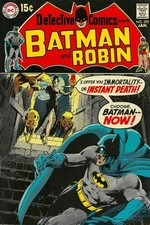
Detective
Comics #395
(January 1970)
|
|
| |
O'Neil was very methodical about
his take on turning the Batman into a much grimmer, darker character
"I went to
the DC library and read some of the early
stories. I tried to get a sense of what Kane
and Finger were after." (O'Neil, in
Pearson & Uricchio 1991)
Ultimately,
this also resulted in underscoring the
investigative side of the Batman's persona -
effectively creating the Darknight Detective.
"There was
very little consistency. Sometimes he was a
detective, sometimes he was more a superhero.
When I took over the franchise I said okay,
this is the way we do it. Batman comics will
be about superhero stuff with a lot of
action, and Detective Comics is about the
same character functioning as a
detective." (O'Neil, in Handziuk
2019)
|
|
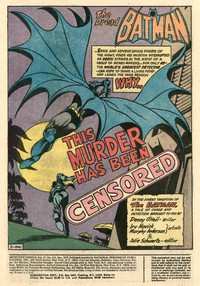 |
|
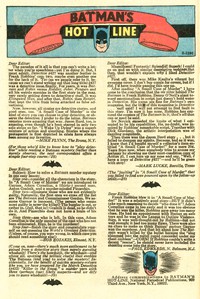 |
|
| |
| As a result, Batman and Detective
Comics took two entirely different routes. The most
obvious change for the latter title was the complete
disappearance of costumed villains, all of which were
replaced by plain clothes thugs and evil-doers. |
| |
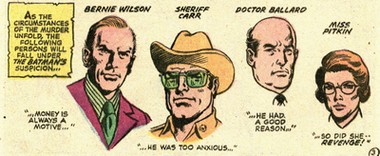 |
|
Detective
Comics #431 is a prime
example of this approach, which
also tried to involve readers in
the puzzle solving process -
matching wits and detection
skills, so to speak, with the
Batman. And like any good novel
from the 1930's Golden Age of
crime fiction by the likes of
Agatha Christie, readers of Detective
Comics #431 were not only
presented with a line-up of the
characters involved but also
given a handy overview of what
their potential motives would be
for them to become suspects as
Batman would unravel and solve
the mystery surrounding the
murder. |
|
|
|
| |
| The classic Michael Kaluta
cover for Detective Comics #431 emphasizes the
frequent nods to literary works of classic detective
fiction, with Batman directly adressing the reader and
declaring, somewhat tongue-in-cheek, "STOP!
NOBODY LEAVES THIS MAGAZINE TILL A MURDER IS
SOLVED!" |
| |
The detective
approach also involved O'Neil
dropping hints that a certain
aspect presented in the text or
(more frequently) depicted in the
artwork contained a vital clue,
as well as showing Batman putting
the bits and pieces together in
his musings and thoughts.
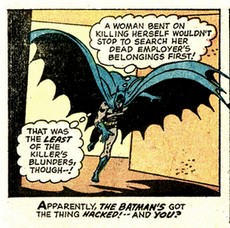 |
|
This
also lead to one or more
instances every issue
where readers were
essentially asked to
pause and consider the
possible solution to the
mystery tale they were
reading - in this case
even prodded by the
remark that "apparently
the Batman's got the
thing hacked! -- And
you?". It
made for great reader
involvement, and the
letters pages at the time
were proof of the fact
that it was appreciated
and savoured. It thus
also made total sense to
haver the cover tag-line "Thrilling
Mystery Tales".
The back-up feature in
Detective Comics
would change frequently
during that period, but
Jason Bard certainly was
a very fitting
accompaniment.
|
Following
his first appearance in Detective
Comics #392 (October 1969),
the stories featuring the Gotham
private investigator worked
exactly the same way - and Frank
Robbins was every bit a master at
this for his own creation Jason
Bard as Denny O'Neil was for the
Batman.
It
distinctly set apart Detective
Comics from other comic book
titles - a special tidbit of
reading thrill. And just like the
aformenetioned crime writers of
the 1930s and 1940s, the stories
and mysteries were played
"fair" - the clues
could indeed be spotted, so in
essence the readers always had
the same knowledge as the
protagonists did.
|
|
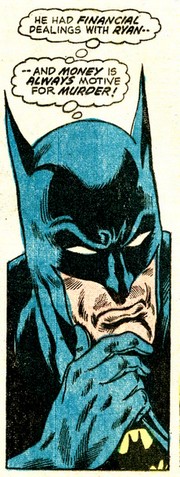 |
|
|
|
| |
|
|
| |
|
 |
|
Detective
Comics was a regular title
in DC's SUPER PACs - six out of
the twelve issues published in 1973 were offered in
DC's Super-Pacs. The
endpage of the Batman story of Detective
Comics #431 featured a half-page ad for Shazam
#1, which would
also be packaged into the B-2
February 1973 Super-Pac.
|
|
|
|
| |
|
| |
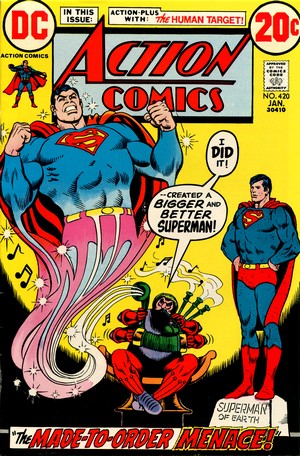
|
|
ACTION
COMICS #420
January
1973
(monthly)
On Sale: 30 November 1972
Editor - Julius
Schwartz, E. Nelson Bridwell
(assistant)
Cover - Nick Cardy (pencils &
inks)
SUPERMAN:
"The
Made-To-Order Menace!" (15
pages)
Story
- Elliot Maggin
Pencils - Curt Swan
Inks - Murphy Anderson
HUMAN
TARGET: "The
King of the
Jungle-Contract!" (8.66
pages)
Story
- Len Wein
Pencils - Dick Giordano
Inks - Dick Giordano
PLOT
SUMMARIES - A
space-travelling bard who has the
power to create what he sings
about comes to Earth and creates
a super-menace for Superman to
battle. The Human Target is hired
by a famous big game hunter who
believes that his rival is trying
to kill him and goes on a safari
in Africa disguised as his
client.
|
|
|
|
| |
| When Action Comics #420
hit the newsstands (and the 1973 D-1 Super-Pac),
the Man of Steel's adventures were regularly in
the hands of writer Elliott (S!) Maggin. Born in
1950 and thus only 22 years of age, he had only
started out twelve months prior, albeit with a
bang - his first script appeared in Superman #247
(January 1972), titled "Must There Be A
Superman?", and gained almost instant
classic status. Maggin was
Instantly considered a prodigy by editor Julie
Schwartz who liked his approach, which was deeply
rooted in classic mythology.
"I had
written a paper for a humanities class
comparing Superman to Achilles, talking about
the classical themes that recur in the
literature of archetypal characters. I think
there's something hard-wired in the human
brain that causes us to suck up stories of
that sort and make them a permanent part of
our consciousness." (Maggin, in
Freiman 2009)
|
|
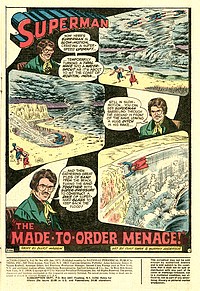 |
|
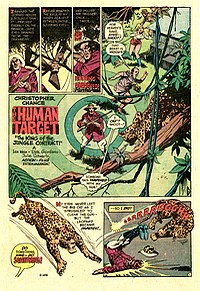 |
|
| |
| And so, Maggin (who would go on
to sign his name as Elliott S! Maggin, the exclamation
mark being a reference to the abundant use made of it in
comic books) was offered the opportunity to write scripts
for Superman (Freiman, 2009). |
| |

Elliott Maggin
|
|
"I
was in the right place at the right
time, certainly, because I fell into
place at a time when Superman was
kind of out of fashion among comics
mavens. When Mort Weisinger retired
and Julie took over Superman I don’t
think anyone knew quite what to do
with the character. Mort’s
approach had been that he was telling
fairy tales for children. When I
showed up with this classic liberal
education, I brought this notion that
Superman was a contemporary icon and
had to reinterpret that iconography
in twentieth-century terms." (Maggin,
in Stroud 2018)
Paired with Maggin
for the artwork were classic Superman
creative talents Curt Swan (pencils) and
Murphy Anderson (inks), both of which
produced work that not only conformed to
the DC house but in many ways shaped it.
"DC
artists were forced to work within an
established house style that governed
the page layout as well as the look
of the artwork. Editor Julie
Schwartz's motto was 'if it's not
clean, it's worthless'."
(Tucker, 2017)
|
|
|

LenWein
(1948-2017)
|
|
Private investigator and
bodyguard Christopher Chance - who assumes the
identities of clients targeted by assassins and
other dangerous criminals and thus goes by the
moniker of Human Target - was created by Len Wein
and Carmine Infantino and made his first
appearance only a month prior to this outing, in Action
Comics #419 (December 1972). The character would continue
to be the back-up feature in several issues of Action
Comics up until issue #432 (February 1974)
before moving to the Batman titles Brave and
the Bold and Detective Comics. In
2010, the Human Target was turned into a Fox TV
series that lasted for two seasons.
"The only
thing I owed my audience was my own judgment
and my own best effort. I write my stories
for me and hope that other people will like
them as well." (Wein, in Wolfman
AN)
|
|
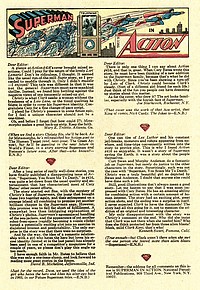
|
|
| Julius Schwartz had only taken
over the editorial reigns of Action Comics with the previous
issue, and he wasn't happy at all with its main
character, the Man of Steel. |
"Having spent
much of the previous decade merely observing
from the cultural sidelines, the
now-thirtysomething Superman was hit hard by
the disillusionment that seized the country
in the 1970s (...) Marvel heroes bickered and
questioned and agitated - they were agents of
chaos, and they looked like the kids who read
them. Superman, on the other hand, dutifully
imposed order, and he looked like a
cop." (Weldon, 2013)
And Schwartz wasn't alone
in feeling that the character had somewhat fallen
out of sync with the times.
"O'Neil
shared his editor's ambivalence, because he
figured that such a high-profile character
would come with too many corporate strings
attached. He also found it difficult to get
excited about a character who could see
through time and blow out a star. "How
do you write stories about a guy who can
destroy a galaxy by listening hard?"
O'Neil famously joked." (Weldon,
2013)
Together, Schwartz and
O'Neil reached the conclusion that the only way
forward was to "depower" Superman -
readers needed to see him struggle.
|
|
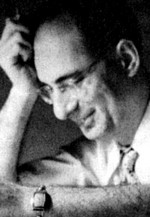
Julius
Schwartz
(1915 - 2004)
|
|
| |
| And so, they took the man of
Steel's well-known major weakness off the board as all
Kryptonite on Earth was turned into iron by a freak
scientific experiment in Superman #233 (January
1971). At the same time, Superman's powers started to
mysteriously fade. |
| |
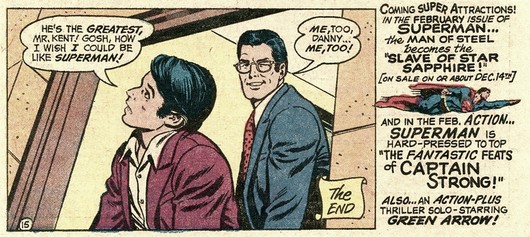 |
|
It was a nice
idea, but there simply were too many
"super-this" and "super-that"
abilities tied into Superman as a character, and
Clark Kent was still constantly having to foil
the discovery of his dual identity. At the end of
the day, not too much changed after all - except
O'Neil didn't want to write Superman anymore
(Freiman, 2009). The most problematic aspect,
however, were the villains: far fetched,
convoluted, and ultimately uninteresting. The
Space Minstrel is just as much an example of this
as are Star
Sapphire and Captain Strong.
|
|
| |
| Unless you were a die-hard
Superman fan, a lot of those stories didn't really seem
to go anywhere relevant. Not surprisingly, many readers
bought Action Comics not because they were fans
of Superman, but because of the second features appearing
in the title (Kingman, 2013). |
| |
|
| |
 |
|
Action
Comics #419 (featuring the
first appearance of Human Target)
was packaged into the D-12
December 1972 Super-Pac . |
|
|
|
| |
|
| |
| DC back in the early 1970s was
often trying hard to be just as cool as competitor
Marvel, but somehow it rarely worked - as can be glimpsed
from the in-house ads of the time, which both in terms of
verbage and visuals is hardly making a splash and seems
very matter-of-fact. |
| |
|
|
| |
| |
|
| |
| FURTHER
READING ON THE THOUGHT
BALLOON |
| |
| |
 |
|
"Comic
packs" not only sold well
for more than two decades, they
also offer some interesting
insight into the comic book
industry's history from the 1960s
through to the 1990s. There's
more on their general history here. |
|
|
|
| |
| |
|
| |
BIBLIOGRAPHY
| |
| |
| EVANIER Mark (2007) "More
on Comicpacs", News From Me,
published online 2 May 2007 FREIMAN Barry
M. (2009) "Exclusive
Interview with Elliot S! Maggin", supermanhomepage.com,
published online January 2009
HANDZIUK Alex
(2019) "An
Interview with Legendary Creator Denny O'Neil -
The father of Modern Day Batman", cgmagonline.com,
published online 16 March 2019
KINGMAN
Jim (2013) "The Ballad of Ollie and
Dinah", in Back Issue #64 (May
2013)
KUBERT
Joe (2005) "Introduction", Edgar
Rice Burroughs’ Tarzan: The Joe Kubert Years,
Dark Horse Books
LUPOFF
Richard A. (2005) Master of Adventure:
The Worlds of Edgar Rice Burroughs,
University of Nebraska Press
PEARSON
Roberta E. & William Uricchio (1991)
"Notes from the Batcave: An Interview with
Dennis O'Neil", in The Many Lives of the
Batman: Critical Approaches to a Superhero and
His Media, Routledge
SCHELLY
Bill (2008) Man of Rock: A Biography of Joe
Kubert, Fantagraphics Books
STEWART
Alan (2022) "Tarzan
#207 (April, 1972)", Attack Of The
50 Year Old Comics, published online 26
February 2022
STROUD
Bryan (2018) "An
Interview With Elliot S! Maggin - A Superman
Author Worthy of the S!", nerdteam30.com,
published online 20 June 2018
TUCKER
Reed (2017) Slugfest: Inside the Epic
Fifty-Year Battle between Marvel and DC,
Sphere
WELDON
Glen (2013) "The
70s Were Awkward for Superman", The
Atantic, 3 April 2013
WOLFMAN
Marv (AN) "Speaking
with Len Wein Part One", What Th--?
Exclamations from The Wolfmanor, published
online, date unknown
|
|
| |
| |
|
| |
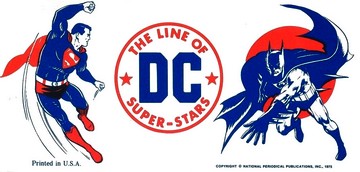

|
| |
|
| |

(c) 2023
uploaded to the web 9 June
2023
|
| |
|
| |
|



